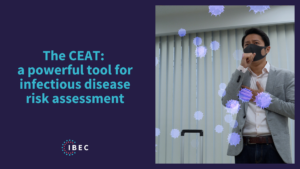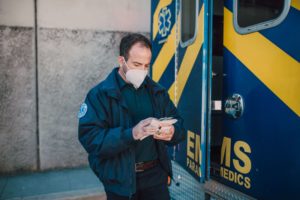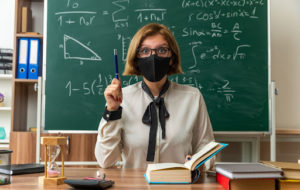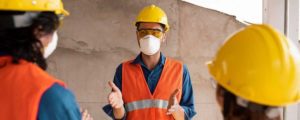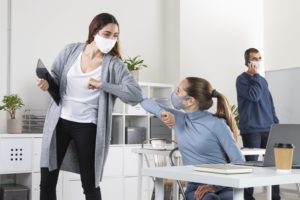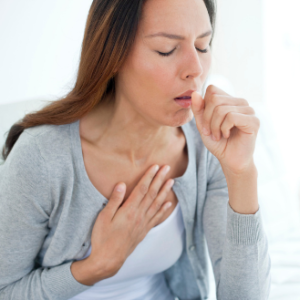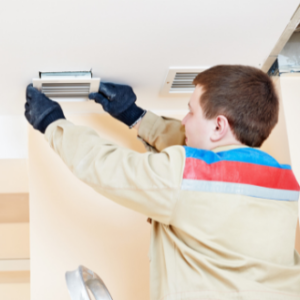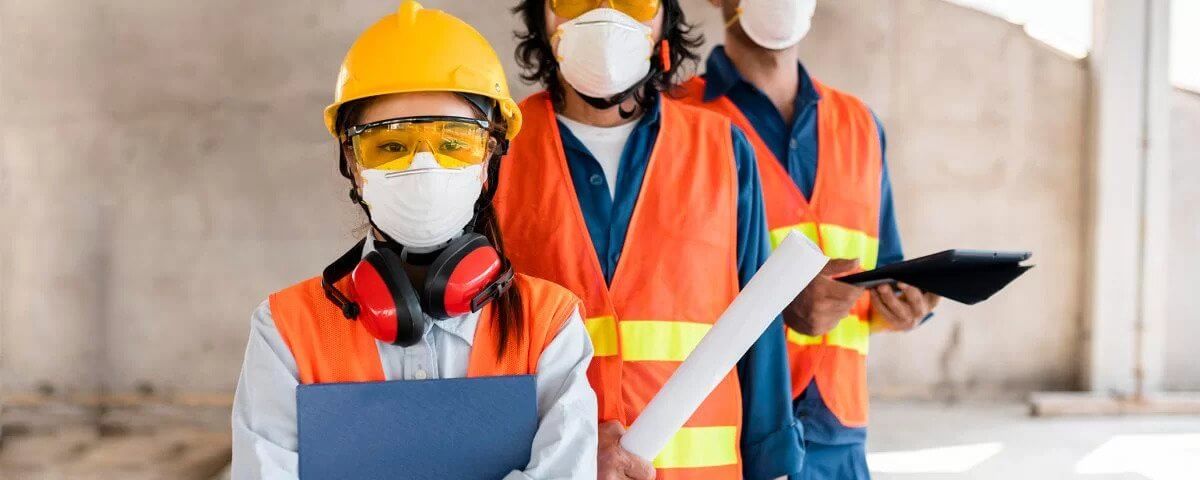
The construction industry has been significantly affected by the COVID-19 pandemic while being challenged to improve its workforce safety and well-being.
Since COVID-19 started, there have been labor shortages due to the work disruptions that developed by following constraints put in place to mitigate the spread of the virus. In addition, there is a shortage of personal protective equipment (PPE).
Construction and agriculture workers are some of the most vulnerable sectors of our economy. They are more susceptible to occupational health hazards, mainly due to the workforce’s dynamic, transient, and multi-layered nature.
Thanks to the collaboration with The American Industrial Hygiene Association (AIHA) and funding from the Centers for Disease Control and Prevention (CDC), The Integrated Bioscience and Built Environment Consortium (IBEC) was able to include a construction and agriculture panel on the “Protecting Our Most Vulnerable Workers: Challenges, Solutions & Invisible Barriers” virtual summit.
At this panel, we were able to identify the most significant challenges and lessons learned by the construction and agriculture industry in the COVID-19 era.
Continue reading to learn more.
Challenges:
The Language Barrier
One of the challenges the construction and agriculture industries face is the language barrier. In the past, there was a transaction where the employee and the employers had a very superficial relationship, precisely when it came to training.
Construction and agriculture workers would attend a meeting and not engage, usually due to not being fluent in the language. However, when COVID-19 started being a problem, it became personal. Now, you could bring the virus home to your families, so workers started to engage and demand more information.
Employers weren’t ready for this, which created a big challenge.
Poor Contact Tracing
Contact tracing has always been a foreign concept within the construction and agriculture industries. The only people who knew about contact tracing were related to the healthcare industry.
When COVID-19 came around, workers were advised to stay home if they were sick. However, it is a bit different when the only way to get paid is to work every day.
Construction & Agriculture Workers were Already at Risk
Rural sections were already at risk, even before COVID-19 hit. They have health issues, are elderly poor, and other particularities that made COVID-19’s impacts even larger.
There were parts of these industries that did not allow remote work. Teleworking was simply not possible, making exposure a significant risk factor.
Lastly and disproportionately, the infrastructure was low; rural hospitals closed across the board. So the health infrastructure before the pandemic was already vulnerable.
Mental Health and Anxiety Challenges
Since COVID-19 started, we have seen an increase in the number of deaths by overdose in the construction and agriculture sector. Farmers were in need to throw away milk and, in general, handle tough seasons.
There are no mental healths providers in rural, so there is no one advocating for their mental health needs, especially when it comes to the pandemic.
Labor Shortage
With barely any sick days, if workers don’t show up, they don’t get paid. Due to the nature of the work contracts, it is easier for workers to seek other employment or just stop working when their current job puts their family’s health at risk.
There are labor shortages all across these two industries, and it is very concerning.
Lessons Learned:
The Importance of Migrant Workers
COVID-19 has shed light on how critical migrant workers are. Legal or not, migrant construction and agriculture workers are a strong and needed workforce within our society.
There is a need to be more strategic and tailored in policies to encourage and support migrant workers. Focusing on the workers and ensuring better benefits can make a big difference in these sectors’ vulnerability and help with labor shortages.
Changing the Language to Fit the Audience
It has become evident the importance of digesting information from sources such as the CDC before passing it along to construction and agriculture workers. It needs to be comprehensible.
The use of video has proven to work well in conveying information. It may be a slower process than just printing something and sticking it to the wall but it brings about better and safer outcomes.
Understanding Different Realities
It is essential to be aware of the types of workers you are addressing in the construction and agriculture industries. For example, one of our panelists encouraged a worker to join a training zoom meeting. The worker asked how he could access it from his flip phone to his surprise.
When you ask someone to join a virtual meeting or give an official document without digesting it first, you assume many things. There is the assumption that they have a smartphone, laptop, or even know how to read.
It is crucial to understand different realities and adapt resources and information to fit the person who is receiving the training.
Worker Engagement
If we don’t have worker engagement, we can’t have safety and health on the job. Without worker engagement, you can’t get that feeling of belonging. If workers don’t feel like they belong, there’s no way they’re going to be safe.
Conclusion and Resources
Construction and agriculture workers are essential to our society, which makes the challenge of keeping them safe very important. These vulnerable workers deserve to have work conditions that keep them and their families safe.
If you’d like to check out the complete Construction and Agriculture panel of the “Protecting Our Most Vulnerable Workers: Challenges, Solutions & Invisible Barriers” virtual summit, click here.
You can also check out the complete virtual summit here.
If you want to check out more resources on how first responders can be safe from the spread of COVID-19, browse the following list:
Construction Committee – American Industrial Hygiene Association.
Construction Industry – Worker Health Safety.
Infrastructure/Construction Worker Health and Safety Needs – American Industrial Hygiene Association.
What Construction Workers Need to Know about COVID-19 – Centers of Disease Control and Prevention.
Construction Work – Occupational Safety and Health Administration.
Guidance by Industry – Occupational Safety and Health Administration.
Agricultural Employer Checklist for Creating a COVID-19 Assessment and Control Plan – Centers of Disease Control and Prevention.
Pledge to do your part in making your building, organization, and community healthier and safer from COVID-19 – Commit To C.A.R.E – American Industrial Hygiene Association (AIHA) & The Integrated Bioscience and Built Environment Consortium (IBEC).
Related Blogposts
C.L.E.A.N. Lessons Learned: How to protect the healthcare system from current and future pandemics
The COVID-19 pandemic caught the world off guard. Health organizations all over the globe rushed into a quick response to protect people from the threat…
The CEAT: a powerful tool for infectious disease risk assessment
The CEAT is a powerful tool for infectious disease risk assessment. Keep reading to learn about its development and use. We will never forget March…
Best ways to be safe from COVID-19 in public transport
Since the beginning of the pandemic, industrial hygienists have been researching and broadcasting the information needed to prevent the infection & spread of COVID-19. Under…
NIOSH Hierarchy of Controls for Public Transport
In our latest CLEAN Lessons Learned Session – Making Confidence Our Travel Companion: Managing the environment to reduce public transport transmission, we discussed how the…
How to Protect first responders from the Spread of Covid-19
After the impact of COVID-19 on our society, it has become evident that one of the industries whose workers are most affected is first responders.…
How to Protect teachers and educators from the Spread of Covid-19
It’s not a surprise that one of our society’s most affected industrial sectors is the education sector. Despite the 2020-21 academic year ending better than…
Interview with J. Frederick: COVID-19 and vulnerable workers
Since COVID-19 started, we have been looking for the right resources and standards to navigate our experience in the world safely. All over the world,…
How To Improve Indoor Air Quality – An OSTP Discussion on COVID
The Biden-Harris Administration identified improved indoor air quality as an essential tool to fight the spread of airborne diseases in the American Pandemic Preparedness Plan…
Why Did It Take So Long To Accept COVID Is Airborne?
This is an extract from our August CLEAN Lessons Learned session “Getting Serious About Airborne Infection Transmission” where Dr. Lidia Morawska gave a presentation about…
Top Guidelines To Follow In The COVID-19 Era
This is an extract of our CLEAN Lessons Learned September session: Resilience, Recovery, Return: Getting back to School Confidently and Safely. To have access to…
- « Previous
- 1
- 2
- 3
- Next »


